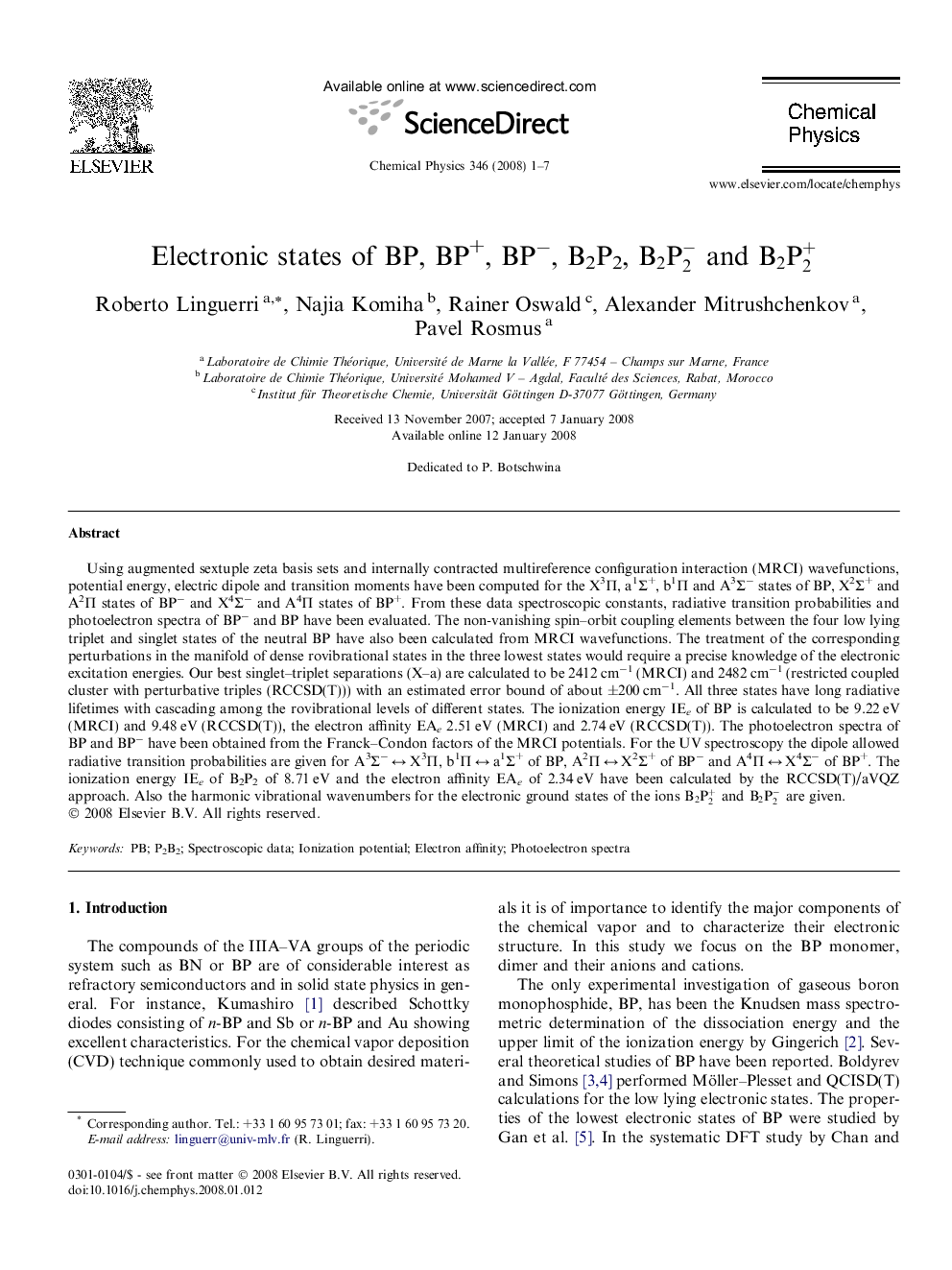| Article ID | Journal | Published Year | Pages | File Type |
|---|---|---|---|---|
| 5376043 | Chemical Physics | 2008 | 7 Pages |
Abstract
Using augmented sextuple zeta basis sets and internally contracted multireference configuration interaction (MRCI) wavefunctions, potential energy, electric dipole and transition moments have been computed for the X3Î , a1Σ+, b1Î and A3Σâ states of BP, X2Σ+ and A2Î states of BPâ and X4Σâ and A4Î states of BP+. From these data spectroscopic constants, radiative transition probabilities and photoelectron spectra of BPâ and BP have been evaluated. The non-vanishing spin-orbit coupling elements between the four low lying triplet and singlet states of the neutral BP have also been calculated from MRCI wavefunctions. The treatment of the corresponding perturbations in the manifold of dense rovibrational states in the three lowest states would require a precise knowledge of the electronic excitation energies. Our best singlet-triplet separations (X-a) are calculated to be 2412 cmâ1 (MRCI) and 2482 cmâ1 (restricted coupled cluster with perturbative triples (RCCSD(T))) with an estimated error bound of about ±200 cmâ1. All three states have long radiative lifetimes with cascading among the rovibrational levels of different states. The ionization energy IEe of BP is calculated to be 9.22 eV (MRCI) and 9.48 eV (RCCSD(T)), the electron affinity EAe 2.51 eV (MRCI) and 2.74 eV (RCCSD(T)). The photoelectron spectra of BP and BPâ have been obtained from the Franck-Condon factors of the MRCI potentials. For the UV spectroscopy the dipole allowed radiative transition probabilities are given for A3Σâ â X3Î , b1Î Â â a1Σ+ of BP, A2Î Â â X2Σ+ of BPâ and A4Î Â â X4Σâ of BP+. The ionization energy IEe of B2P2 of 8.71 eV and the electron affinity EAe of 2.34 eV have been calculated by the RCCSD(T)/aVQZ approach. Also the harmonic vibrational wavenumbers for the electronic ground states of the ions B2P2+ and B2P2- are given.
Related Topics
Physical Sciences and Engineering
Chemistry
Physical and Theoretical Chemistry
Authors
Roberto Linguerri, Najia Komiha, Rainer Oswald, Alexander Mitrushchenkov, Pavel Rosmus,
